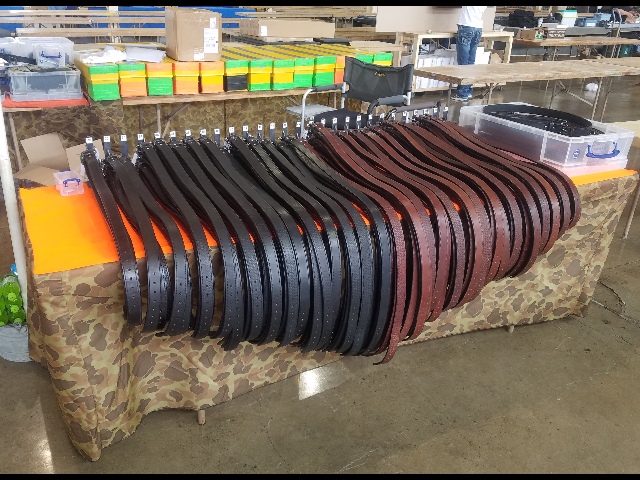Concealed Carry Gun Selection
Concealed Carry Gun Selection can be a big can of worms. Everyone has an opinion, and of course, it’s totally right. For them, at least. I’m not going to get into “what caliber is the best”, or what ammo is the best, I’m simply going to point out some facts that should be universal.
Small guns are easier to hide.
File that under “no duh?”, right? There are a lot of people that pick out a duty sized weapon for concealed carry. It doesn’t matter what the reason might be, or what the perceived need is for a full sized duty gun is. The bigger it is, the harder it hides, it’s as simple as that. If you pick on a smaller weapon, you are going to have more concealment options.
Hurtful Things
Sharp angles and pointy things HURT. And they hurt YOU. Anytime you have an odd or pointy shape pointed against your body, you are asking for pain. If you choose to carry a gun with such features, there are ways to help. Switching to Outside the waistband holsters. Using something that gets it away from being pressed against your body (belly band, concealment T-shirt), but it is something that needs to be considered. Even just getting a “body shield” style holster can make a difference.
Rust is not your friend
Your best bet for a convenient concealed carry gun selection is going to be one that’s as rustproof as possible. If you carry a finely blued gun, sooner or later, you are probably going to be cleaning surface rust from it. Pick a stainless, a hard chromed, a nickel plated gun, or a Duracoated Gun (or just one with a really nice hard finish), and you will spend a lot less time worrying about the metallurgical state of your weapon.
Safety Features
This is easily “the eternal question” and probably deserves it’s own write up.
Safety features should always come into consideration in concealed carry gun selection. Make sure that you are are comfortable with the safety features on your weapon, that there are enough for you to be comfortable, and that you practice until the muscle memory takes over and you don’t have to think about pulling down the safeties when you need the gun.
Muscle memory is the phenomena where you are so used to doing something, that you automatically do it without having to think about the steps involved. Think “buttoning up your shirt” or “tying your shoelaces”… you just do it without thinking “this goes here, and I push on that”.
Slim is In
The thinner, the better. Usually. Automatics tend to be thin already, but some of them are still quite thick. A thinner gun is simply easier to hide than a thick one. Single stack mag weapons (guns with magazines that hold one round on top of the other, not “staggered” to put more rounds on it) tend to have the thinnest outlines, because they don’t have to accommodate a double stacked magazine. There are double stacked guns out there with pretty thin outlines. Choose carefully.
Remember that the obvious “flip side” to a thinner weapon is that you carry less ammo in the gun. If the amount of ammo that you carry is a concern, you should weight that when considering a thin gun.
Price and Safe Queens
Price comes up when selecting a concealed carry gun, not only because you need to be able to afford to buy the gun (because even if it’s perfect for you, if you can’t afford it, it doesn’t help), but because you need to actually be willing to CARRY the weapon. Time and time again, I’ve heard people talk about their perfect carry weapon.
That they don’t have on them. Why? Because if they carried it, it might get rusty, scratched, dinged, or otherwise depreciated.
I understand that, but that doesn’t help out when you need a weapon. Sometimes, picking on an ugly and relatively cheap weapon as your day to day carry makes perfect sense, especially if you actually carry it day to day, rather than leave it in the safe at home. The gun you have with you is far more effective than the gun that you left at home.
Weapon Reliability
Of course, reliability of the weapon is a key concern, and that should be obvious to anyone. Reliability not only affects whether it goes “boom” when you want it to, it also affects whether or not it goes “boom” when you DON’T want it to. Make sure that the weapon that you choose is reliable enough to satisfy you in both of these regards.
There is no one perfect gun. If there was a perfect gun, that’s the only one that would ever be made. Every weapon has a mix of features and benefits (and liabilities), that you are going to have to weigh to find out what works for you in the situations that you find yourself in. Just be sure to think about the options carefully, and in time, you will find yourself a good option or two.
Return to Concealed Carry Tips

